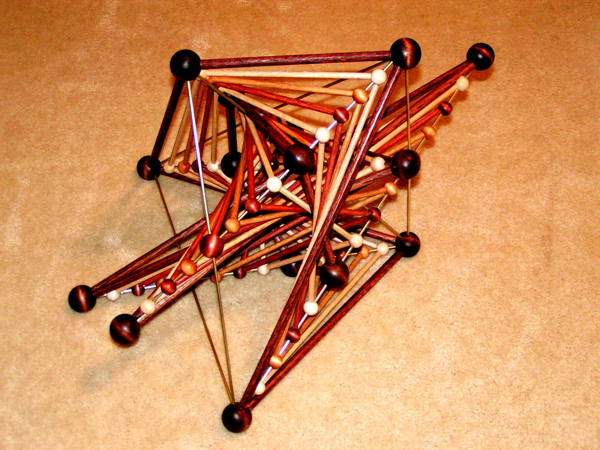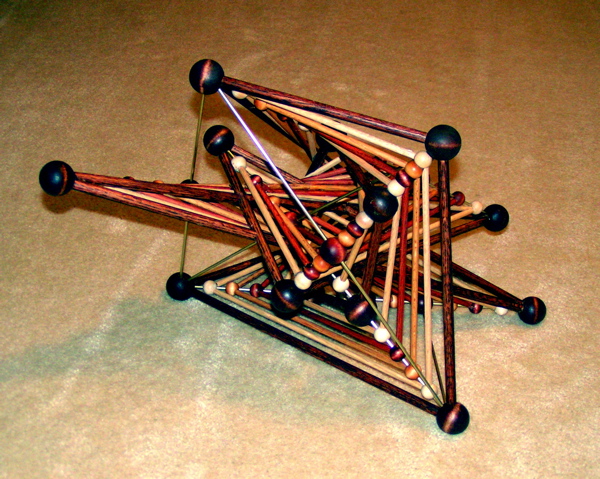Douglas Burkholder
“Pentagons in Motion”
Two viewsBrass and Wood, 20" x 16" x 12", 2006.


If the five vertices of an irregular non-planar pentagon each slide towards the midpoint of their respective adjacent secant line at speeds proportional to the length of these line segments then at a certain moment in time these five points will flatten out to form a planar affine regular non-stellar pentagon. As these points continue sliding they fold themselves up and then flatten out once again to form an affine regular stellar pentagon. This sculpture consist of 14 nested pentagons which attempt to capture the motion of the pentagon flattening, folding, and flattening again. The original pentagon and the two affine regular planar pentagons are stained dark brown. The observer is challenged to find the viewpoint from which the stellar affine regular pentagon appears to be perfectly regular, and also to find the viewpoint from which the non-stellar affine regular pentagon appears to be perfectly regular.
Dr. Doug Burkholder, Associate Professor of Mathematics, Lenoir-Rhyne College, Hickory, NC
"Every polygon in three space can be planarized by a sequence of linear constructions. The sequence of construction necessary for planarizing a polygon are predetermined based only upon the number of vertices and the desired shape of the resulting planar polygon. My sculptures are an attempt to capture interesting examples of irregular polygons sliding from their original shape into various planar polygons. My desire is for the sculptures to convey a sense of motion as these polygons flow from one shape to the next folding and unfolding in interesting and unexpected ways."